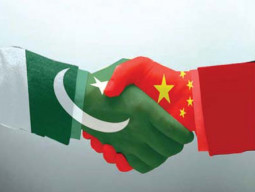
Pakistan Petroleum Limited (PPL) plans to spend Rs10 billion in fiscal 2013-14 to drill seven to eight new wells in a bid to shore up gas production, which is continuously declining from the aging fields, a company official said on Monday.
Exploration activities have been expedited on the 13 blocks it acquired in 2010 as part of the company’s strategy to find replacement for the older fields like Sui and Kandhkot.
“This is not a problem faced only by PPL. Production from all the mature fields in Pakistan is on the decline,” said Asim Murtaza Khan, the managing director of PPL, speaking at the company’s annual meeting of shareholders.
“The decline will continue. Right now, our entire focus is on the Gambat South block because that is where we expect the biggest addition in gas supply to come from.”
Earlier this year, PPL announced gas discoveries from two wells in the block, which is located in Sindh’s Sanghar district. This will add 50 to 70 million cubic feet of gas (mmcfd) to the system.
In the coming months, most of the exploration work will also be carried out in Sindh where security is relatively better and road connectivity available, Khan said.
PPL accounts for 22% of the country’s gas production. It posted a profit of Rs41.95 billion in fiscal 2012-13, a marginal increase of 2% over the previous year. But output from all of its major fields declined during the year.
Overall, PPL’s gas production came down to an average of 908mmcfd from 1,000mmcfd recorded last year. Its crude oil output went up to 2.9 million barrels a year from 2.2 million barrels, increasing its profitability.
“But things wouldn’t have been that bad if Water and Power Development Authority (Wapda) had been taking all the gas from our Kandhkot block,” said Khan. “The field can supply 200mmcfd, but Wapda is taking just 160mmcfd. We are in talks with the government to use the available gas.” Wapda’s power plants are too old and break down continuously.
The company has been trying to slowdown the depletion rate of its fields by installing compressor plants and drilling more wells.
PPL’s six producing fields include Sui, Kandhkot, Adhi, Mazrani, Chachar and Hala, while it has working interest in eight partner-operated fields.
By the end of June 2012, it was sitting over cash and cash equivalent reserves of Rs34.5 billion while currently Rs26.9 billion are still stuck in circular debt.
PPL also has working interest in offshore fields in Iraq and Yemen. In Iraq, where there is a high chance of success, the company will spend $100 million over five years at part of the contract.
Bolan mining enterprises (BME)
PPL hopes to start production of iron ore from Balochistan next year. “There were some issues with the provincial government that are being resolved,” Khan said.
BME, a 50-50 joint-venture between Balochistan government and PPL, owns three mining leases in Dilband and Nokkundi. Khan say’s the estimated reserves of iron ore stand at around 40 million tons.
Production of iron ore from Nokkundi is expected to start in 2014 as most of the planning and design work has already been commissioned.
BME has already supplied fine ore to Pakistan Steel Mills during 2003 and 2004, but supply was discontinued when the purchase agreement was not renewed, according to PPL website.
The joint-venture remains the leader in mining and supplying barite in Pakistan, meeting 80% of the requirement of petroleum exploration companies. In the past year, they also managed to export barite.
The mud volcano
After the recent earthquake and emergence of an island off the Gwadar coast, there has been a general interest in the pungent methane that is being discharged from the place.
“That is just a mud volcano. That is not a gas reservoir. It is dissolved gas,” Khan said. “The island will disappear.”
Published in The Express Tribune, October 1st, 2013.
Like Business on Facebook, follow @TribuneBiz on Twitter to stay informed and join in the conversation.
COMMENTS (2)
Comments are moderated and generally will be posted if they are on-topic and not abusive.
For more information, please see our Comments FAQ

















@A. Khan, being ex-PPL explorationist myself, I think PPL is one of few organization under state umbrella where there is a constant effort to utilize money sensibly, in the interest of company, state and the shareholder. I don't know when were you in PPL but things have changed and are changing for better in PPL. I must give credit to Mr. Asim M. Khan for his leadership which is bearing fruit now.
What PPL should be doing is investigating fracking as a means of boosting production from existing fields.
Having observed PPL first hand during my years at a services company, the PPL executives are more interested in getting freebies like a ticket to Europe or a carton of Johnny's best than in making sound decisions on PPL's future. It brings into question the mandate of some supposedly private companies that behave more like sarkari offices..